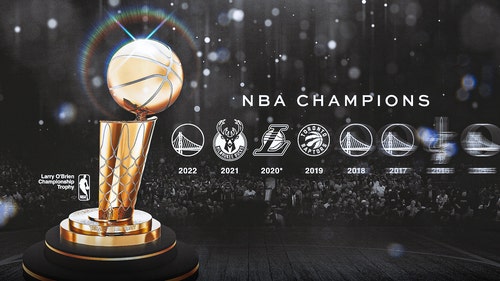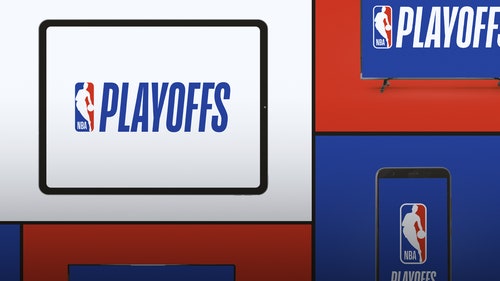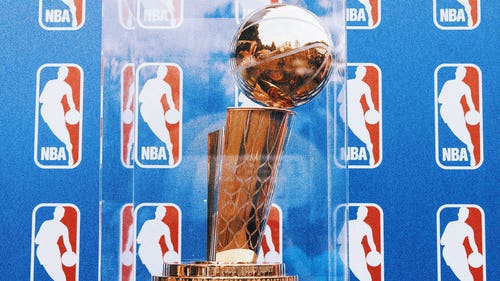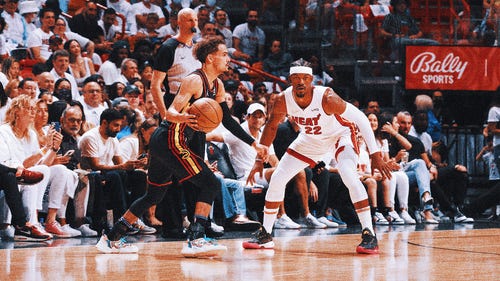
The Evolution of NBA Defense
The last 10 NBA champions have finished top 10 in Defensive Efficiency. How are teams attacking offenses with scoring at an all-time high?
In the 1998-99 season, the scoring average for NBA teams finished at 91.6 points per game, the lowest since the shot clock era began. National interest dwindled over the next five years, a combination of the retirement of Michael Jordan, troubled stars and low scoring slugfests.
The league responded with a myriad of rule changes to enhance the offensive side of the ball. The league created defensive three seconds, began curtailing hand checks and limiting the use of forearms into the body of the ballhandler.
These changes opened up the floor for guards, favoring a wider drive-and-kick attack that craved the use of all available floor space.
Simultaneously, the league began to get smarter about shot selection, pace and ball movement. Analytics has become such a polarizing word and one that dictates a person to choose one side of the aisle. You either swear by them, or you curse all that they stand for.
For decades, the consensus was, “closer to the rim, better shot.” That is no longer a viable stance to have, as there’s simply too much data to state otherwise.
There are so many tracking tools at the disposal of all 30 NBA teams now, the trick is turning the massive amounts of data into something meaningful.
Changing the culture has been a progression, one that the NBA has fully adapted to, and is trickling down to lower levels of basketball. Teams are shooting the 3-point shot at a higher volume than ever before, and designing their offenses around the long ball to ensure quality looks.
The NBA is a copycat league, and teams like the Golden State Warriors, Houston Rockets and Cleveland Cavaliers who bomb away from the 3-point line 30-plus times per game are impossible to keep up with if you’re trading 2s with 3s.
It’s no longer an option to shoot the 3-ball, it’s a necessity.
Red Auerbach was prophetic in saying:
“Basketball is like war in that offensive weapons are developed first, and it always takes a while for the defense to catch up.”
Most of the modern statistics are geared toward the offense, as there’s more tangible points to measure (passes, shots, dribbles).
Combine that with the aforementioned rule changes that have enhanced scoring, and coaches who made their name by crafting defensive schemes likely head to bed each night with a bottle of Tums by their bed.
Defense is hard at any level. It takes commitment from all five players, knowledge of personnel and scheme, communication, effort and oftentimes in the NBA the shot still goes in, execution be damned. These are the best players in the world.
Therefore, the best NBA defenses are designed to bend, not break.
Tom Thibodeau made “icing” ball screens the new way to defend pick and rolls back when he was an assistant with the Boston Celtics, using Kevin Garnett’s length and masterful defensive instincts to contain guards while taking away the roll man.
In addition, defenses are now designed to take away the most valued shots in today’s game, one of which being shots at the rim. The Indiana Pacers developed Roy Hibbert into a virtuoso of verticality, contesting shots at the rim by jumping straight up, arms fully extended.
According to NBA Stats, teams shot a paltry 44.6 percent at the rim against Hibbert in 2013-14, when he earned second team All-Defense honors.
Having rim protection is a necessity in this NBA, with a constant push/pull struggle between the offense attempting to draw premier rim protectors away from the lane and defenses attempting to keep them within range to patrol the paint.
Having bigs with the foot speed to keep up on the perimeter while also defending the rim is an advantage not understated.
Versatility is the name of the game in the NBA currently. “Positionless basketball” is a buzzphrase within the league currently, as teams attempt to blend the duties of 1-5 together. 6-foot-11 point guard? Yep. 7-foot-3 with the ability to pick and pop? Why not.
Teams are attempting to get faster and more versatile without sacrificing too much of the necessary size to play the NBA game.
With this versatility comes the luxury of switching on a much larger scale than previously seen in the NBA. During the Warriors’ run to 73 wins last season, pundits, fans (and privately coaches) lamented how would anyone be able to stop this machine.
The Oklahoma City Thunder showcased the blueprint in the Western Conference Finals, switching not just on-ball screens, but most off-ball screens as well.
More from Hoops Habit
It took away the effectiveness of Golden State’s limitless screens set for Stephen Curry and Klay Thompson by simply switching them.
Combine that with the length of Oklahoma City’s lineup, with all five players having a wingspan more than 6-foot-7, and the court shrank dramatically for Golden State, eliminating passing and driving lanes.
So, why doesn’t every team do that to the Warriors?
Because defense is difficult, switching every screen in an arena packed with 20,000 screaming fans takes an incredible level of concentration and finding five players with the length, athleticism, motor and trust in each other to do that is rare.
It’s not a coincidence that the top six teams in defensive efficiency currently have either been together for a number of years or are veteran-laden teams (Golden State, Utah, San Antonio, Memphis, Atlanta, Los Angeles Clippers).
In May and June, the best basketball players in the world will be competing with maximum effort at both ends. Defensive rotations will be executed just as intensely as fast break alley-oops. And that is when the NBA is at its absolute best.













































































































































